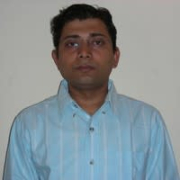What is our primary use case?
We use both the static and the dynamic scanning. What we do is run the code through the scanner once we make any modifications. And periodically, we also run the dynamic to connect several applications. We use Veracode to check for specific vulnerabilities such as cross-site scripting. When we are checking for those vulnerabilities, we take a portion of code that is going to be generated and we run the scanner.
How has it helped my organization?
We work a lot with open sources. Using the Static Analysis, the Dynamic Analysis, and the scan module, we can control everything we do via Veracode. Moreover, because all our applications are security applications, keeping a high security standard is really important.
The visibility into application status across all testing types in a single dashboard is helpful because, even if you are running different types of scans, you have everything in one place. You have a unique dashboard to control all the applications, and that is good.
Overall, we've never had any problem with vulnerable code going into production. It's quite a solid tool. We have a really good feeling with this solution.
What is most valuable?
The most valuable feature is actually the support provided by Veracode. Once you start to use the platform, you can mount the IDE plugin for your script. The advantage is that you can run the scan and check what the problem is and you can fix it yourself. Support could be used to address something that could go beyond your skills. If you use Veracode Greenlight, you have a small pop-up that you can use to interact directly with the team and you can ask a consultant to advise how an issue can be fixed. One of the good things about the Greenlight plugin is that it is very simple. There are several guides that tell you how to install it. It's a matter of one or two minutes and you are ready to go.
Once you check something, they provide links, not manually, it's all automated. When you want to check into a vulnerability you click and open the website where there is a description. If this is not enough of an answer, you can ask directly by scheduling an appointment with a Veracode guy.
Another feature of Veracode is that they provide e-learning, but the e-learning is not basic, rather it is quite advanced. They don't teach you how to develop in Java, Python, PHP or C#, but they instruct you about the best practices that should be adopted for secure code developing and how to prevent improper management of some component of the code that could lead to a vulnerability. The e-learning that Veracode provides is an extremely good tool. And as far as I know, there are no other competitors that offer it.
The best stuff is the training: this enables your team to adopt the same programming approach, although these people have a different background or joined the projects in a different phase. Doing that, they can take the training and be aligned so that they all write code in a good way.
We also use the Static Analysis Pipeline Scan and it's quite good. They provide several of the most common templates for pipelines. You see the process, while you program, right up until you package an application, and that the platform is able to detect things that are a blocking point. Before deploying to the production, you already know what is doing. And the speed of the Pipeline Scan is quite good.
Another good feature is the policy reporting for ensuring compliance with industry standards and regulations. We test compliance for medical devices, for GDPR, and for payment methods. These are all good. If you are not correctly prepared on one of these sets of regulations, you know that Veracode is going to take care of it using pre-prepared templates. But we can also customize our own policy if we are facing a unique use case. Even if it's not really common, we can take a regulation and build it the way we want it to look.
In addition, you can check everything from the dashboard. Veracode provides a web portal that is connected with your account and through that you can check the status of all the deployments that were run. And suppose you also have an application that is quite complex. You can deploy and upload it through the portal. When it is ready, you receive a notification from the portal that the job has been done and that you can check the results. When you go to the dashboard, you have the OWASP vulnerabilities. There is a really simple graphic with the colors showing how many vulnerabilities have been found and how much these vulnerabilities are repeated in your code. It also tells you the potential effect, if it is a backdoor data breach, for example, etc. It also suggests what you can do to remediate. It might suggest modifying code or changing the status of some part of the development, or updating a third-party.
And if you have people on different projects, there is also a role management feature, so you can select, for example, that people who are working on a given project can only see that project. If you are running something with different levels of classifications, for example, if you have an external consultant, it does not affect the confidentiality of the system. When people are collaborating, not all people are at the same level of an NDA. It is good that each person can see only their part implementing Need-To-Know.
It also integrates with developer tools. We use IntelliJ and Eclipse, among others.
What needs improvement?
They should invest in mobile security.
For how long have I used the solution?
I have been using Veracode since 2017.
What do I think about the stability of the solution?
We have never faced a problem or any downtime.
What do I think about the scalability of the solution?
We haven't perceived any issue when it comes to scalability. But it's true that if you have more tenants, the response of the scanners is going to get released quicker.
How are customer service and support?
I would rate Veracode's technical support at nine out of 10. They would probably deserve a 10 but it is not as quick as it should be. They need to increase the support workforce. The support people are well-prepared, but it can sometimes take one or two days to get the right guy to do support.
Which solution did I use previously and why did I switch?
The previous solution that we were working with was mainly focused on the quality of the coding. We are happy with Veracode because it's focused on security.
How was the initial setup?
The initial setup is very simple. The Veracode guy who accompanied us made it appear really straightforward.
It's a SaaS solution so once it's prepared on the Veracode side, to deploy onsite may take up to a couple of hours to get everything prepared, mainly due to the configuration, for a simple implementation. Overall, setting up the product is quite straightforward.
In terms of managing the code, it's quite simple for us because we are all technical guys. Once we saw it working, it was really easy to manage. We have three people who use the solution and they are all developers.
What about the implementation team?
The Veracode team is replying fast and the proved a strong expertise in every challenge.
What was our ROI?
We could save some money having an on-premise solution, but the fact that this is a SaaS means we can be sure that it's updated. It's outsourced. In terms of cost, I don't see a big advantage, but in terms of operations there is because we don't have to take care of it. We know that if, somewhere else in the world, somebody detects a vulnerability, a few minutes later we will already have a patch. This is extremely important for us. Nobody in our company has to touch anything to get this.
If we had to designate one or two people to take care of maintenance of an application, at some moment one of them might not be updating things. With Veracode, we know that we don't have to worry. We just have to focus on our development. We don't consider maintenance at all because it's all managed.
What's my experience with pricing, setup cost, and licensing?
The pricing is quite standard. It's not cheaper, it's not more expensive.
Which other solutions did I evaluate?
We looked at other vendors but we selected Veracode because it had a top rating in industry reviews. For us, that was like a warranty.
What other advice do I have?
We were skeptical about running scans with a cloud-based solution, but then we saw the benefits. Everything is up to date without us having to lift a finger. We know we don't have to take care of maintenance.
Also, if you work in the domain of medical devices, payment methods, or other things that are related to privacy, Veracode provides all these modules. This is a big advantage.
Sometimes the scans are not done quickly, but the solutions that it provides are really good. The quality is high, but the analysis is not done extremely quickly.
False positives are not a main problem. The platform does try to overprotect but, of course, a system like this can only understand the syntax and not the semantics. So it's overprotective when there is a doubt. Sometimes, we ignore some of the advice received.
Disclosure: PeerSpot contacted the reviewer to collect the review and to validate authenticity. The reviewer was referred by the vendor, but the review is not subject to editing or approval by the vendor.






















